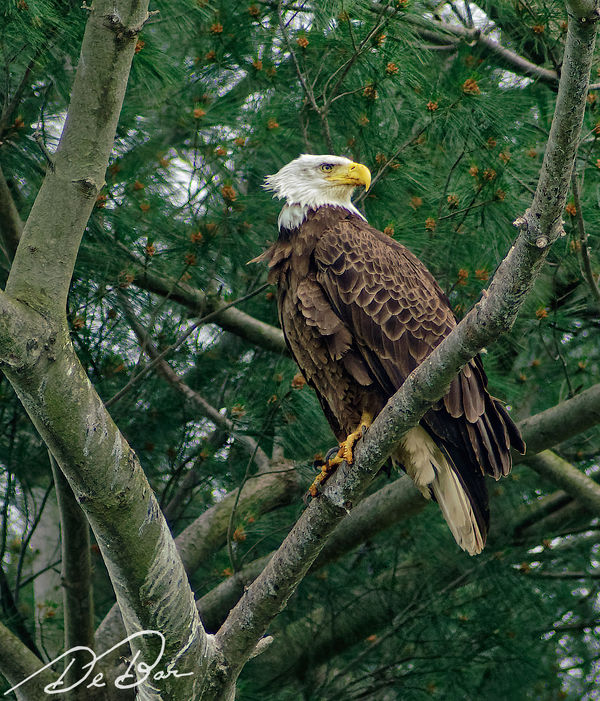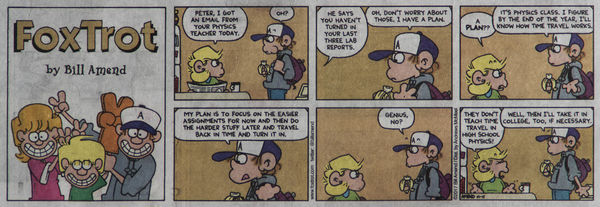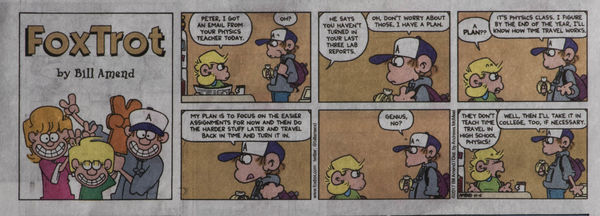I have changed my mind about teleconverters, yet again!
Oct 18, 2017 13:06:16 #
It's interesting how much we learn as photographers. A beginning photographer might think they can save money by buying a TC hence avoiding the expense or need to buy a longer lens. This spring when I was photographing eagles, I came to the conclusion that TCs were worthless on my 600mm f/4 lens with the 42.4MP camera attached, because I could do better with cropping. See attached photo of an eagle done by cropping the image down to a tiny section of the photo.
Today I proved myself wrong! I discovered that a TC can be made to work by simply using higher f-stops. I'm posting two photos to show what I mean. Both of the photos were taken at 1/250 seconds, f/13, ISO=200, using a flash. In one photo I used a 2X TC in the other I did not, but cropped it down to cover the same area.
All of these photos will need to downloaded to understand what I mean.
You will notice that the use of a TC makes the individual spots that make up the drawing visible. These tiny dots are not visible in the image that was magnified through cropping.
I learned something today. Passing it on helps me remember.
Today I proved myself wrong! I discovered that a TC can be made to work by simply using higher f-stops. I'm posting two photos to show what I mean. Both of the photos were taken at 1/250 seconds, f/13, ISO=200, using a flash. In one photo I used a 2X TC in the other I did not, but cropped it down to cover the same area.
All of these photos will need to downloaded to understand what I mean.
You will notice that the use of a TC makes the individual spots that make up the drawing visible. These tiny dots are not visible in the image that was magnified through cropping.
I learned something today. Passing it on helps me remember.
Taken without a TC and cropped. f/4

(Download)
Taken with 600mm lens and 2X TC f/13

(Download)
Taken with 600mm lens no TC and cropped.

(Download)
Oct 18, 2017 13:42:40 #
Oct 18, 2017 14:14:27 #
I have a set of TCs but never used them on my long lens. I have used them on my normal lens with good results.
Oct 18, 2017 14:15:17 #
Oct 18, 2017 14:34:34 #
Hal81 wrote:
I have a set of TCs but never used them on my long lens. I have used them on my normal lens with good results.
I am the exact opposite. I have 6 teleconverters, 1 Canon, 1 Nikon, 2 Sigma and 2 Tamron. The 2 Sigma TC'S are specifically for the 2 150-600 lenses. The Nikon is for the 200-500. Canon is for the 100-400L II and the Tamrons are mainly for windy days but I do occasionally use them on the SP 70-200 and for experimentation and general foolishness.
TC's have a place in the photography world but using then on a small prime or small zoom seems to me to be somewhat of a waste.
Oct 18, 2017 14:38:35 #
rjaywallace wrote:
Unnecessarily silly post.
Maybe silly but never unnecessary.
I love your avatar.
Oct 18, 2017 14:48:34 #
Davethehiker wrote:
It's interesting how much we learn as photographer... (show quote)
I am not to sure what to think here.
You offer a comic as a sample?
The only difference that is noticeable is that due to the TC using only the center of the lens. This accounts for the distortion change. The rest, I do not see it.
TC have their use. The main problem is the drop of luminosity. The secondary problem is that TC are sold by a bunch of companies that deliver crap. The result is that you have to be really careful when selecting a TC.
The aperture being closed to achieve is normal, in my opinion, as the lens length is changed its optical quality is too so you have to find the new 'sweet spot' of the lens when used in combination with the TC.
Oct 18, 2017 14:50:13 #
rmorrison1116 wrote:
I am the exact opposite. I have 6 teleconverters, 1 Canon, 1 Nikon, 2 Sigma and 2 Tamron. The 2 Sigma TC'S are specifically for the 2 150-600 lenses. The Nikon is for the 200-500. Canon is for the 100-400L II and the Tamrons are mainly for windy days but I do occasionally use them on the SP 70-200 and for experimentation and general foolishness.
TC's have a place in the photography world but using then on a small prime or small zoom seems to me to be somewhat of a waste.
TC's have a place in the photography world but using then on a small prime or small zoom seems to me to be somewhat of a waste.
I have the Tamron 70-200 f/2.8 and the Tamron 2X teleconverter and I am not happy with it. I cannot get a sharp photo with the converter. It is very soft. The lens is great though. They were bought together and I anticipated using them to have 400mm capability.
I have moved on and now use the Sigma 150-600 C lens for long range. Still have the 70-200 for midrange.
Oct 18, 2017 23:29:37 #
For those who say they don't understand, I believe you. For those who say their dedicated TC does not give good results on the lens it was made for, here is another example of making good use of a TC.
http://www.uglyhedgehog.com/t-489297-1.html
Hint: Look at the f-stops used! Read the text. Download the images and look at them full sized. Use the magnifier option!
http://www.uglyhedgehog.com/t-489297-1.html
Hint: Look at the f-stops used! Read the text. Download the images and look at them full sized. Use the magnifier option!
Oct 19, 2017 01:04:15 #
Davethehiker wrote:
It's interesting how much we learn as photographer... (show quote)
Can definately see the individual dots in the TC version when magnified. And not so with the non-TC cropped example. Interesting test.
Oct 19, 2017 07:58:12 #
Davethehiker wrote:
It's interesting how much we learn as photographer... (show quote)
I like your examples with the comic strip, it really shows the difference in details. I have and use both Canon and Tamron 2X converters. They do the job for what I bought them for. Good review here. Thanks for sharing.
Oct 19, 2017 08:37:02 #
JimH123 wrote:
Can definately see the individual dots in the TC version when magnified. And not so with the non-TC cropped example. Interesting test.
waegwan wrote:
I like your examples with the comic strip, it really shows the difference in details. I have and use both Canon and Tamron 2X converters. They do the job for what I bought them for. Good review here. Thanks for sharing.
Thank you for your remarks. I'm glad you enjoyed the posting. Thank you for taking the time to read my post and for downloading and examining the images.
I'm bewildered by those who said they could not see the difference?! I had a hard time finding a good subject to photograph. I had downloaded and printed some typical test patterns normally used to evaluate lenses but it was hard to see the difference. The dots on the comic strip worked out very well. Some know me for the stop action photos I have posted in the past of hummingbirds. I had burned out on taking hummingbird photos because I could not think of a way to take better photos than I already had. I think I now know a way to capture more detail and get a slightly better depth of field.
Good lenses are expensive but can make a big difference in what is possible. With the resolution of today's digital camera's, we are pushing the limits of many lenses. The bottom line is that if you want get the most out of a lens using a TC, one must use higher f-stops. This was not as apparent on earlier digital cameras using less Mega Pixels.
Oct 19, 2017 09:35:36 #
Davethehiker wrote:
Thank you for your remarks. I'm glad you enjoyed t... (show quote)
I agree there is no substitute for good lenses. Although I am artistically challenged and consider most of my photography as snapshots I use exclusively L series lenses. I'm pretty sure a 600mm prime is better than a 28-300 with a 2X converter but in my hands I doubt that anyone could tell the difference, meaning that my photography wouldn't do the 600 prime justice. That said, I happy doing what I do always learning and trying to do better next time.
Oct 19, 2017 11:37:28 #
waegwan wrote:
I'm pretty sure a 600mm prime is better than a 28-300 with a 2X converter but in my hands I doubt that anyone could tell the difference, meaning that my photography wouldn't do the 600 prime justice. That said, I happy doing what I do always learning and trying to do better next time.
I'm pretty sure a 600mm prime is better than a 28-300 with a 2X converter but in my hands I doubt that anyone could tell the difference, meaning that my photography wouldn't do the 600 prime justice. That said, I happy doing what I do always learning and trying to do better next time.
You are selling yourself short. People tell me that I "have a good eye." I think that just means that they find the same things pleasing that I do, or that most people do. Photography is one of the few arts that can be taught and talent developed, regardless of natural talent.
When you use a big prime like a 600mm f/4, things that were not previously possible become evident. It's something that you must experience. I bought mine after seeing a shockingly good photo of an eagle pulling a fish out of a lake that someone had posted on the Internet. I contacted the photographer and asked him "What lens he used to take that photo." He told me and started shopping for one. He is also a wonderful photographer and he was one of the first people who told me that TCs are a waste of time. Others have since told me the same thing and I for the most part believed it myself. They do work but only at higher f-stops. This is something that can not be accomplished on fast moving subjects (a distant eagle yanking a fish out of the water.) It can be done by using flashes or something standing very still.
I like your attitude when you say, "I'm happy doing what I do always learning and trying to do better next time." You will do well.
BTW I also happen to own a 70-300 f/4.5-5.6 lens, (two of them because a friend gave me another) I consider it a very good lens as long as you work within it's limits.
Keep having fun and keep learning.
Oct 21, 2017 16:18:36 #
Hi Dave, a worthy post. I have had similar experiences. 1. Using the same lens at f2.8 and f11 showed me the greater depth of field gave me corner to corner sharpness at f11, but a relatively soft overall image at f2.8. So it seems depth of field is an important element of sharpness.
2. I have picked up detail on my CX sensor (Nikon 1) that I could not get on my DX and FX sensors. I know in theory I ought to be able to crop the larger sensor images to get the same results but it generally doesn't work that way for me in practice.
3. I have gotten sharper images in live view (which uses contrast detection) than through the viewfinder (which uses phase detection). This is especially true with a smaller CX sensor camera like the Nikon 1, maybe because a larger image aids in the contrast detection autofocus.
4. Autofocus beats manual focus unless I'm using a tripod with the 6x screen magnifier in live view.
5. I have a manual TC but I need to use it with manual lenses, because I find my autofocus lenses default to f22 (equivalent to f44 with a 2x TC) with the manual TC, which makes it unusable. When I get the chance I'll try out your experiment with a good 150mm manual lens and the 2x manual TC.
2. I have picked up detail on my CX sensor (Nikon 1) that I could not get on my DX and FX sensors. I know in theory I ought to be able to crop the larger sensor images to get the same results but it generally doesn't work that way for me in practice.
3. I have gotten sharper images in live view (which uses contrast detection) than through the viewfinder (which uses phase detection). This is especially true with a smaller CX sensor camera like the Nikon 1, maybe because a larger image aids in the contrast detection autofocus.
4. Autofocus beats manual focus unless I'm using a tripod with the 6x screen magnifier in live view.
5. I have a manual TC but I need to use it with manual lenses, because I find my autofocus lenses default to f22 (equivalent to f44 with a 2x TC) with the manual TC, which makes it unusable. When I get the chance I'll try out your experiment with a good 150mm manual lens and the 2x manual TC.
If you want to reply, then register here. Registration is free and your account is created instantly, so you can post right away.









